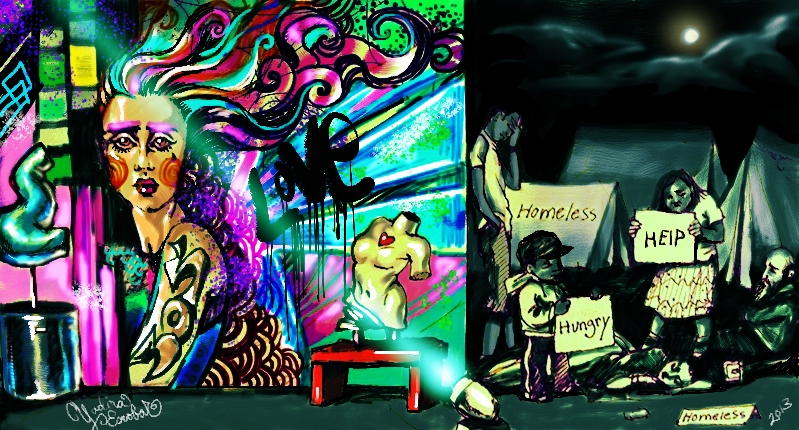
The Triangle
MIAMI – In Miami-Dade County, statistics demonstrate that one out of 85 people will be the victim of a violent crime. In Opa-Locka, a municipality located in the northwest sector of the county, the crime rate is seven times higher than the rest of the United States, and it’s estimated that every week a child is murdered. These kids, many of them teenagers, are sandwiched between different gang rivalries or caught in the middle of bitter drug trafficking … Miami-Dade cannot turn its back on them as hopeless causes.
It is why this week I focused on a small residential neighborhood in north Opa Locka formerly known as ‘The Triangle.’ The troubled habits common in these seemingly normal but vandalized blocks have forced city officials to come up with elaborate resolutions against street crime. The latest of those plans has included changing its name to “Magnolia North” – an area that city officials tell us will not only boast a new, floral title, but will also supposedly spawn new art centers.
Triangle Residents have been warned not to expect the same level of success as Miami’s Wynwood neighborhood, where in the mid 2000’s, its abandoned warehouses, on the west side, were improvised into modern art galleries, cafes and fashion stores. After all the media hype and hipster interest has toned down, the question still being asked is whether residents on the east side have benefitted in any real way from the explosion of street art and fancy night bars now found in Wynwood?
In my opinion, the answer is an obvious, not really! The fact is that many long-time residents of Wynwood were displaced from their 1960’s homes after gentrification.
What visionaries from Opa Locka’s Community Development Corporation (CDC) predict for Magnolia North is a visual shift from the old, tainted record of drug trafficking and uncensored violence into an urban oasis stocked with homes turned into art galleries. The real question should be: How will esthetic upgrades like new coats of paint to facades, new playgrounds, and the placement of random benches along sidewalks address the real issue?
The Triangle’s reputation for bloodshed began in the 1980’s. Back then the neighborhood had many possible road exits. In an attempt to limit, and thus capture, the violators, metal barricades were strategically placed on most of those street exits. They still remain in place and drug traffickers have simply changed their routes and methods. The streets during the day lie barren, desolate, and most buildings stand in utter destruction with ravaging traces of extreme poverty.
Back in the 90’s I lived just four houses north of the Triangle. I was studying at Rainbow Park Elementary, enrolled in the now-closed magnet department of art. One afternoon, after getting on the school bus, a desperate young man drenched in blood from head to toe was banging on the bus door to escape his assailants. The frightened children screamed at the driver not to open the door, since she seemed hesitant. The blood-soaked man then fled to the nearest house and I saw with my own eyes how a gang of roughly 20 men caught up to him and entered the random home. Nearby, a foreboding old man sat in a chair condemning the act, slightly shaking his head. It was such a common incident, at the time, but nevertheless distressing.
Around 80% of the children riding that bus lived right there in those neighborhoods, constantly exposed to such terrible acts of barbarity.
As a visual artist and supporter of fine art, I have no personal objection to the flourishing of the arts outside of Miami Beach. The new gentrification plans will supposedly raise the market value of the neglected neighborhood and promote future investments by rendering it visually pleasing. However, architectural eye-candy will serve only as a cosmetic concealment of deeper social woes and does not necessarily attract serious, real-world investments.
After a year or two, an exterior coat of paint begins to crack, peel off, and playgrounds lose any faint feeling of childish joy, especially when at 3 a.m. a mutilated body is discovered inside a swirling slide. The ruthless violence is what plagues mothers at night and haunts seniors … not the lack of shade on the pedestrian sidewalks or the lack of paint on its walls.
Projects like Magnolia North cost millions of public and even private moneys, and since you can never choose both, instead of “beautifying” the Triangle, in my opinion a tightening of security would be more beneficial to the general population.
Stricter vigilance, tighter sanctions against crime, and the creation of greater opportunities to stimulate those stuck in ghettos with an honest desire to make things better for themselves is not out of the question. I would start by pointing fingers at police officers who arrive 15 to 30 minutes after they’ve been called to a crime scene. Innocent civilians should not have to pay for the wrongdoer’s crimes, or fall at their mercy or whim… They deserve the state’s full protection. Only if the crime rate drops (with the help of the City Council, Police Department and conscientious residents), only then will serious investors move in.
Excessive spending and lavish planning on cosmetic and ‘chic,’ novel projects are a thing of the past. I know that sometimes it takes years to accept the new reality, but in this case, the quicker the adaptation the better. Let’s not live in denial.

